Product added to cart
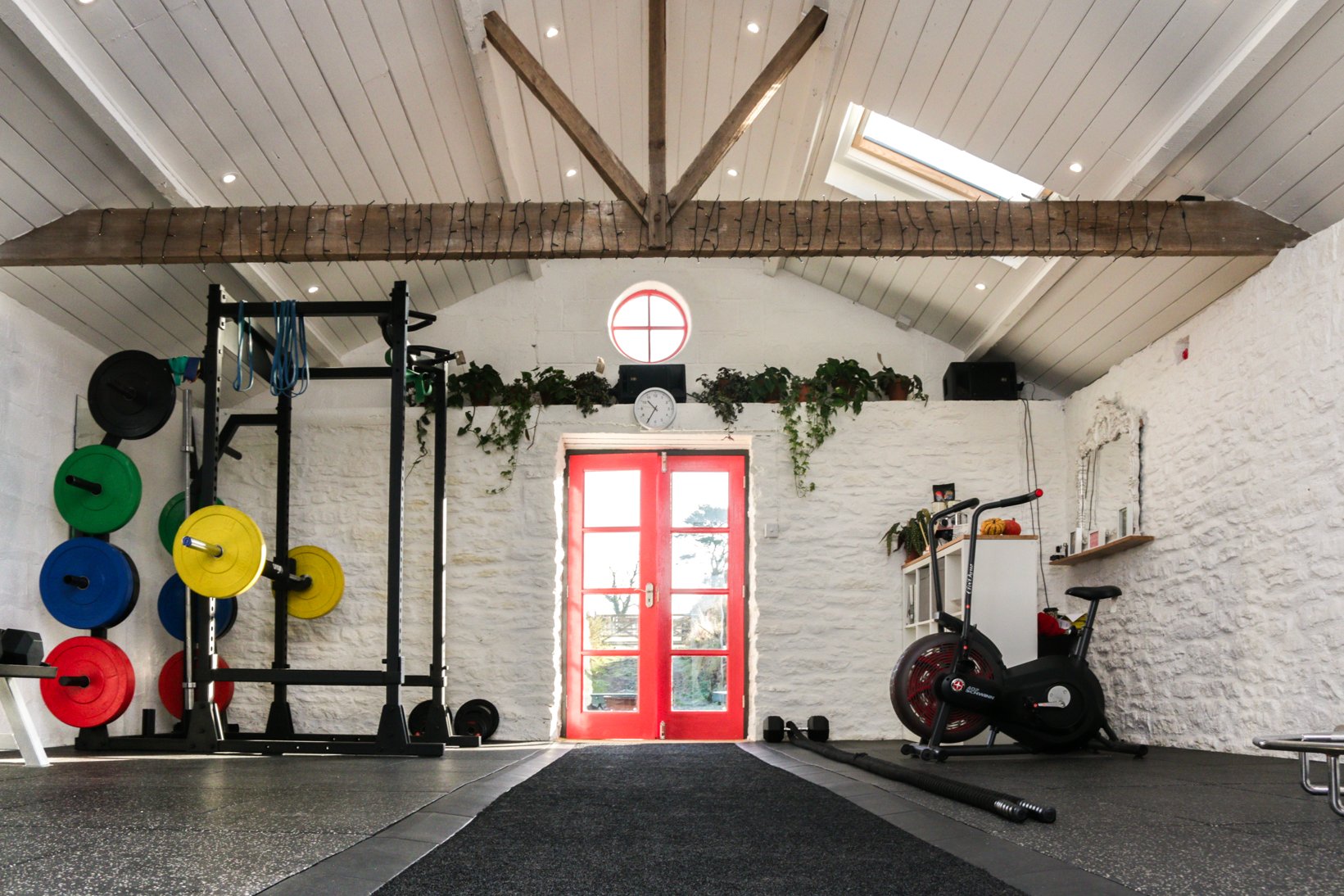
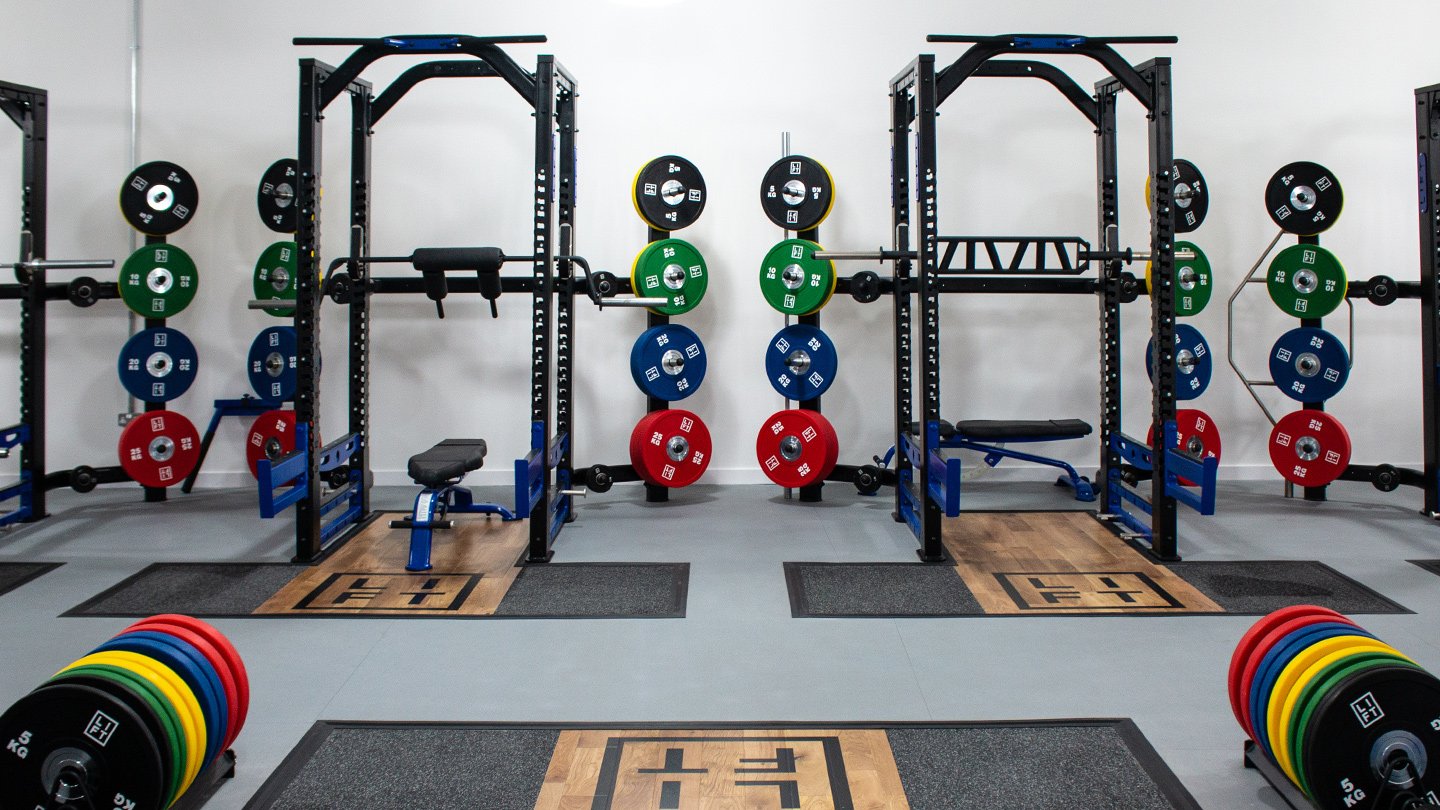
Weight lifting has grown in popularity over the years. Purchasing a power rack is a great place to start on you weight lifting journey. We've created this power rack buying guide to help you determine the right one for you.
As a gym owner or home buyer, you'll need to make sure you have the right power rack to meet you or your member's needs. Here are some things to look out for when next fitting out your weight lifting space.
There are seven main types of rack for weight lifting that we'll cover. Each might suit your needs in a different way. Most will allow you to perform a core set of movements in a similar fashion (barbell squats and presses being the most important).
The differences lie in the extra features or accessories that racks offer. Here's everything you need to know about lifting racks.
The Alpha Squat Stands offer the smallest amount of support you can get while still being able to call it a rack. These stands are typically the most portable. They are a light-weight method of keeping the bar off the ground at shoulder height. The arms can often be moved up and down to adjust the bar height or J-hook positioning can be adjusted. This makes it a great option for simplicity and adjustability. Out of the types we'll cover, these generally come in at the lowest price point.
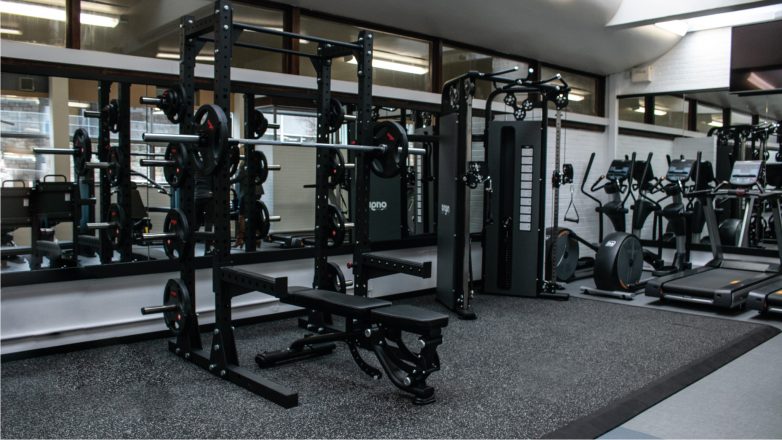
The Alpha Series Half Rack is the first of the traditionally recognised racks. They offer more support and adjustability than squat stands. The also feature safety bars and usually an overhead bar for pull-ups and band attachments.
This type of rack provides you with great all around freedom in your lifting. It is the perfect solution for a gym looking for small footprint equipment. The increments found on the front columns allow users to position the J-hooks and safety bars precisely.
Being 'open' at the front makes a half rack a good option for lifts that are performed a couple of steps away from the rack . For example, this is particularly important for overhead lifts and movements like split jerks or overhead squats.
Due to the dual vertical supports and horizontal connections, a standard half rack should safely support both a novice and experienced lifter. That being said, due to being lighter and generally less stable in comparison to a power rack, very heavy barbells being dumped onto the safety arms on a half rack (especially if not bolted down) could cause the rack to move.
Many half racks will come with plate storage and even weight bar storage round the back. Meaning that you don't have to buy additional toaster racks or weight plate tree.
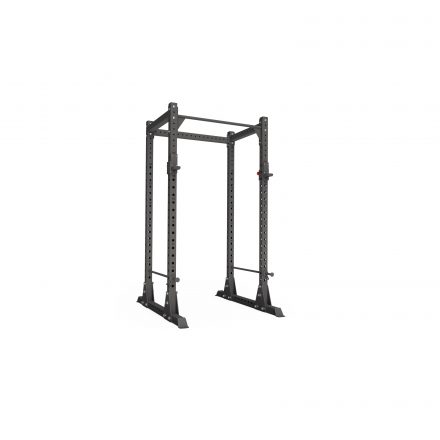
While it can look a little intimidating at first glance, an Alpha Series Power Rack serves much the same purpose as a half rack. It does, however, provide more stability and safety due to its "cage" design. The cage has dual columns at the front and back, supported by horizontal bars top and bottom. This allows the Power Rack to be able to handle weights heavier than a half rack. It also means that any barbells being dumped are less likely to escape out onto the gym floor when released.
The downside is that a full power rack will take up some additional space on your gym floor. A good gym designer will be able to work with your space to maximise it for your specific goals and requirements.
Usually, a rack wouldn't come with enough J-Hooks and safety bars to do so but these are readily available. Look for weight plate storage and additional pull up bar options in your rack. As well as a strong steel build quality and plenty of increments for precision training and accessory placement.
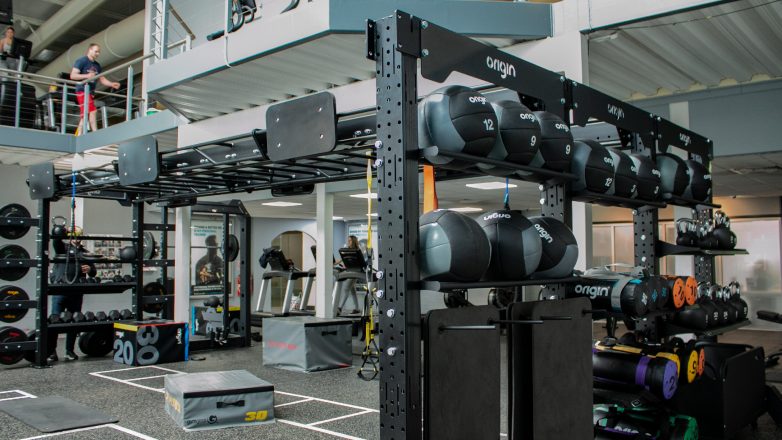
The popularity of rigs has grown hugely on the gym floor. Many gyms now opt to incorporate their rack offering within their functional rig setup. Whether the Origin Elite or Performance rig range, the possibilities for your gym floor are endless.
The Origin Elite range consists of storage made to create multi-functional zones for any type of training. Consisting of racks, rigs, and bridges which are configurable to fit any shape and size of gym. The Elite range is ideal for high traffic commercial facilities; being aesthetically pleasing while allowing your gym floor to be clear for optimal usage of space.
The Origin Performance range has been specially designed to deliver concepts. Containing racks and a range of attachment perfect for Olympic lifters with reinforced structures to manage heavier weights. The bespoke design option allow you to create your own Performance rig for your exact training needs.
More frequently, racks and functional rigs are wall-mounted at installation. Some of the benefits of installing a wall mounted rig/rack are as follows;
Wall mounting maximises gym space by ensuring that the racks/rigs (often the bulkiest equipment) can be installed as close to the wall as possible.
Fixing the rig or rack to the wall also achieves stability more effortlessly. Secure fixing to the wall by a professional will mean you can be assured of the rack's integrity when under heavy loads.
Some experts would argue that a Origin Smith Machine shouldn't have a place on this list of rack types. However, from our experience, there are a large number of facilities who chose to complement their racks with a Smith Machine.
The simple reason for this is that it offers a safer way for beginners or lone trainers to practice free weight movements that the otherwise might not be able to train.
The Smith Machine looks similar to a half rack or power rack (depending on the model). With the exception that the barbell is fixed on vertical runners. These don't allow the bar to deviate from a vertical (or close to vertical) motion. Some Smith Machines will also allow forward and backward motion as well as vertical - an example of this would be a 3D Smith.
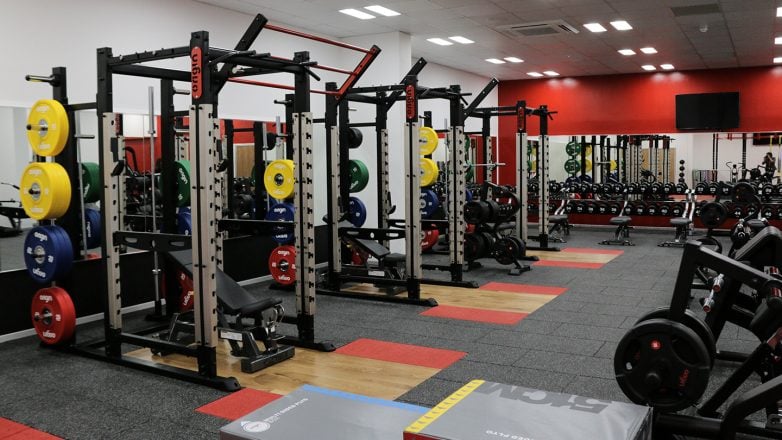
Weight plate storage itself often comes as standard with half racks and power racks, but can depend on the range. When looking at the storage arms, check whether there's definitely enough space for the plates and weights you're looking to store. Also make sure that there is enough storage for any extra accessories you might use in your training.
Having an outward angled plate storage can also come in handy if you're looking to place multiple lifting racks in a row. The angle of the storage means users don't have to squeeze in between two racks to load/unload. However, keep in mind this will increase the floor space required for each rack. This might limit the total number of racks you're able to place within one area.
If you're planning on offering a variety of bars to your users, integrated bar storage will be useful. Short vertical shafts around the back of the rack allow you to store bars away safely while keeping them close by for convenience.
Having small pegs at the top and bottom of the rack on which to attach Origin Power Bands gives you even more versatility in your lifting. Attaching the band to your bar from the bottom means you'll experience increasing resistance the further up you come from a squat. Hanging the bands down from the top bars allows you to go through a range of pulling and pushing motions without ever having to leave the rack.
If the floor pegs are positioned flush against the floor, these will also allow you to carry out resistance floor work. We've created a video showcasing the incredible versatility of power bands.
Many lifting racks will come with pull up handles or a horizontal bar that is meant to be used for pull-ups/chin-ups. When buying your rack, it is important you check that your gym has enough room above the rack to complete a full pull up motion (and that it doesn't force your head through the ceiling!).
It's also worth checking that the handles themselves have good texture and enough variety in the grip positions for your users.
If the rack you're looking to buy comes with J-Hooks included, it's worth inspecting them with a keen eye. Your J-Hook should be high enough quality to support the drop of a heavy bar. It will also need to keep your bar intact while loading and racking. Many J-Hooks come with a plastic insert which is more gentle on your bar and its knurling. This keeps your expensive bars in great condition for the long term.
As mentioned in the Power Rack section, you may need to purchase separate J-Hooks. Especially if you are planning to have a rack available to use by two athletes at once.
Just like the J-Hooks, you're looking for a sturdy safety bar that will support a drop of a heavy bar. Check that the steel is thick, and consider a safety bar with a plastic insert on top to protect your bar when dropped.
We often see gyms choosing to include attachments on their lifting racks. The main three being the Step Platform, Core Plate and Dip Attachment. The adjustability of the rack makes it ideal for any user and brings an element of functional training to the lifting zone. Other attachments we have supplied include a prone row bench, grappler attachment and medicine ball storage.
Your accessories, safety bars and J-Hooks should all slot smoothly into position and show the number of your increment clearly.
If you're looking to buy a rack, it is worth keeping in mind the benches you'll be using with it. If you don't have any benches yet, it is worth considering multi-adjustable benches. These will give you the most training options both inside your rack as on the free weight floor.
Some benches have the option to be secured on to a rack for perfect positioning. These will likely have to be purchased from the same manufacturer.
As regular gym-goers become more proficient lifters, they may want to explore the worlds of powerlifting or Olympic lifting. Thinking ahead allows you to get some exciting looking lifting platforms options that don't necessarily have to be a huge expense.
Integrated platforms slot into your lifting rack independently. They can be added at any time after the purchase of the rack. When buying your platform, make sure you have enough floor space in front of your rack to accommodate the shock absorbent wings. Also consider the width of the platform, so that it can sit flush within the rack.
A space saving solution is the inlaid platform. This is usually installed at the same time as your fitness flooring and before the rack goes in. Having an inlaid platform removes the height difference between the platforms. It also allows racks to be placed closer together. Most importantly, they look amazing and can be custom made to match your brand.
Hopefully this guide has helped you make an informed choice. However, if you have any further questions our team is always on hand to help you make the right decision. If you're looking for inspiration, our case study pages are full of photos and videos of completed projects from over the years.